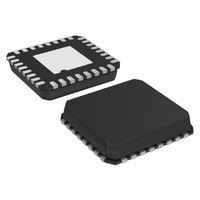AD8153ACPZ-RL7 Analog Devices Inc, AD8153ACPZ-RL7 Datasheet - Page 20

AD8153ACPZ-RL7
Manufacturer Part Number
AD8153ACPZ-RL7
Description
IC,Telecom Switching Circuit,LLCC,32PIN,PLASTIC
Manufacturer
Analog Devices Inc
Series
XStream™r
Datasheet
1.AD8153ACPZ.pdf
(24 pages)
Specifications of AD8153ACPZ-RL7
Applications
2:1 Multiplexer/1:2 De-Multiplexer
Interface
I²C
Voltage - Supply
3 V ~ 3.6 V
Package / Case
32-LFCSP
Mounting Type
Surface Mount
Lead Free Status / RoHS Status
Lead free / RoHS Compliant
For Use With
AD8153-EVALZ - BOARD EVALUATION FOR AD8153
Lead Free Status / RoHS Status
Lead free / RoHS Compliant
Other names
AD8153ACPZ-RL7TR
Available stocks
Company
Part Number
Manufacturer
Quantity
Price
Part Number:
AD8153ACPZ-RL7
Manufacturer:
ADI/亚德诺
Quantity:
20 000
AD8153
INTERFACING TO THE AD8153
TERMINATION STRUCTURES
To determine the best strategy for connecting to the high speed
pins of the AD8153, the user must first be familiar with the on-
chip termination structures. The AD8153 contains two types of
these structures: one type for input ports and one type for output
ports (see Figure 37 and Figure 38).
For input ports, the termination structure consists of two 55 Ω
resistors connected to a termination supply and an 1173 Ω
resistor connected across the differential inputs, the latter being
a result of the finite differential input impedance of the equalizer.
For output ports, there are two 50 Ω resistors connected to the
termination supply. Note that the differential input resistance
for both structures is the same, 100 Ω.
INPUT COMPLIANCE
The range of allowable input voltages is determined by the
fundamental limitations of the active input circuitry. This range
of signals is normally a function of the common-mode level of
the input signal, the signal swing, and the supply voltage. For a
given input signal swing, there is a range of common-mode
voltages that keeps the high and low voltage excursions within
acceptable limits. Similarly, for a given common-mode input
voltage, there is a maximum acceptable input signal swing.
There is also a minimum signal swing that the active input
circuitry can resolve reliably. The specifications are found in
Table 1.
VCC
VTTI
VEE
IPX
INX
V
V
IN
IP
Figure 38. Transmitter Simplified Diagram
Figure 37. Receiver Simplified Diagram
50Ω
I
T
50Ω
55Ω
1173Ω
55Ω
VCC
VTTO
OPX
ONX
VEE
Rev. 0 | Page 20 of 24
AC Coupling
One way to simplify the input circuit and make it compatible
with a wide variety of driving devices is to use ac coupling. This
has the effect of isolating the dc common-mode levels of the
driver and the AD8153 input circuitry. AC coupling requires a
capacitor in series with each single-ended input signal, as shown
in Figure 39. This should be done in a manner that does not
interfere with the high speed signal integrity of the PCB.
When ac coupling is used, the common-mode level at the input
of the device is equal to V
swings above and below V
the specifications in Table 1 to determine the input signal swing
levels that satisfy the input range of the AD8153.
If dc coupling is required, determining the input common-
mode level is less straightforward because the configuration of
the driver must also be considered. In most cases, the user
would set V
output termination voltage. This prevents a continuous dc
current from flowing between the two supply nets. As a
practical matter, both devices can be terminated to the same
physical supply net.
Consider the following example: a driver is dc-coupled to the
input of the AD8153. The AD8153 input termination voltage
(V
set to the same level; that is, V
differential p-p swing is desired, the total output current of the
driver is 16 mA. At balance, the output current is divided evenly
between the two sides of the differential signal path, 8 mA to each
side. This 8 mA of current flows through the parallel combina-
tion of the 55 Ω input termination resistor on the AD8153 and
the 50 Ω output termination resistor on the driver, resulting in a
common-mode level of
The user can then determine the allowable range of values for V
that meets the input compliance range based on an 800 mV p-p
differential swing.
50Ω
TTI
V
) and the driver output termination voltage (V
TTI
V
− 8 mA × (50 Ω || 55 Ω) = V
CC
TTI
Figure 39. AC-Coupling Input Signal of AD8153
DRIVER
on the AD8153 to the same level as the driver
50Ω
C
C
N
P
TTI
TTI
. The single-ended input signal
IP
IN
AD8153
equally. The user can then use
TTI
1173Ω
= V
55Ω
V
TTOD
TTI
TTI
− 209 mV
= 3.3 V. If an 800 mV
55Ω
TTOD
V
VEE
) are both
CC
TTI















